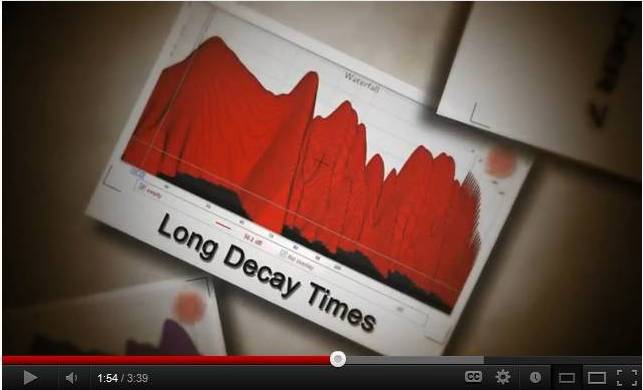GIK Acoustics continues our educational video series with Bass Traps & Understanding Lower Frequencies. This video examines how low end frequencies move in a room and how bass traps can solve these problems.
Before we can identify where frequency response problems are and how to fix them with bass traps, we need to understand how sound moves and how it interacts in your room.
People tend to think of sound travelling in a straight line. At high frequencies, this is relatively true; however, as you go lower on the frequency spectrum, sound acts less like a ray and starts radiating more like a three dimensional sphere. So in lower frequencies, sound not only comes at you but also wraps around items in the room and bounces – or ‘reflects’ – off floors, ceilings, side walls and front walls before coming back at you. All of those reflections arrive from different places at different times with different intensities and at different phases.
In addition to this odd radiation pattern, bass waves are also much longer and much stronger than higher frequency waves and there is very little in a typical room that is dense and large enough to have much impact on these longer, stronger waves. By comparison, there are a lot of things in your room that can have an impact on mid- and high- frequencies. Things such as carpet, equipment, furniture, curtains, people, and even air can either absorb or scatter higher frequency waves making rooms considerably more damped in mid and high frequencies. People and heavy furniture can have some impact on low frequencies; however, starting with broadband bass control via bass traps is usually the first thing recommended in order to bring your room in line.
When addressing a room’s acoustics, we need to not only address the frequency response, but also the decay time curve.
Why is decay time so important? If a room was perfectly flat in frequency response yet ten times too long in the bass decay time, you would still not be able to properly hear balance, harmonic textures, imaging cues, etc. In addition, when bass bounces around the room for too long, it tends to interfere with the direct sound you are hearing from your monitors. When this interference occurs, it can either happen constructively or destructively. Constructive interference causes large peaks in response. Destructive interference causes large nulls, or dips, in response.
These types of peaks and nulls based on reflected waves can occur for a variety of reasons.
- They can be modal, which refers to problems based purely on a room’s dimensions.
- They can be non-modal, which can be based on where you are sitting.
- Or, lastly, they can be related to how a speaker is placed in relation to its boundaries and the seating position which can cause phase related response problems.

Share:
Video: Early or First Reflection Points
Video: Testing for Corner Bass Trap Placement